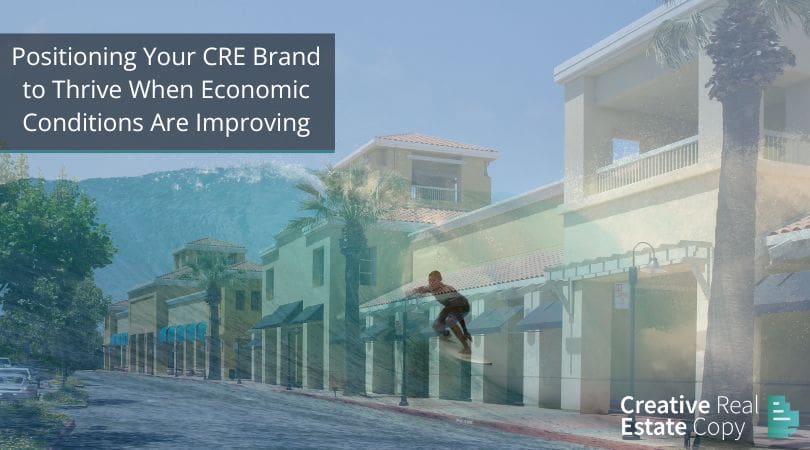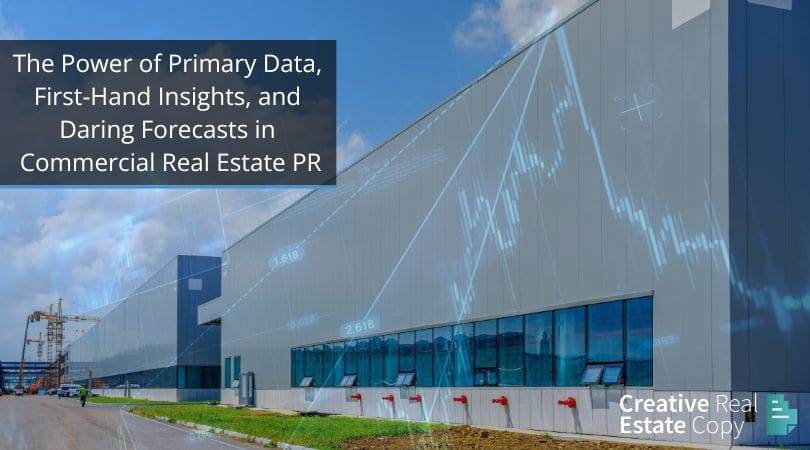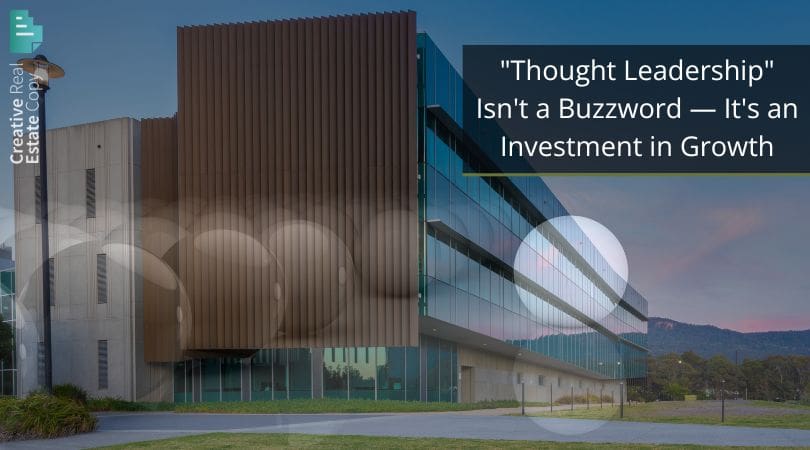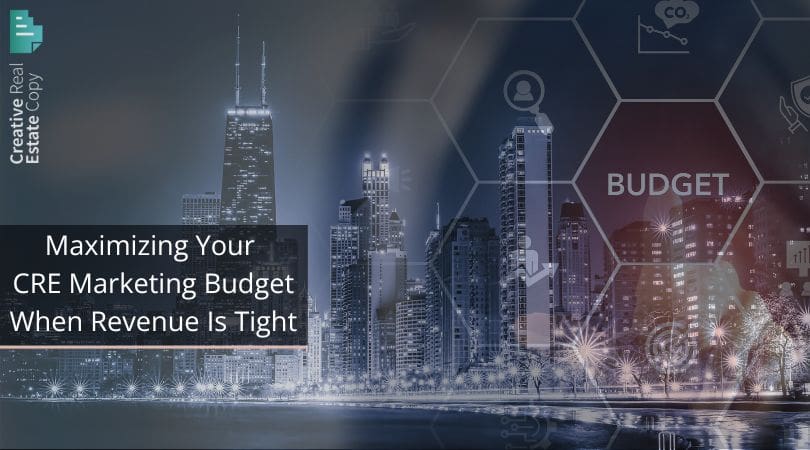In a recent article, we explored how the right words improve closing ratios. Strong language builds trust before the pitch. Weak language slows momentum. The same principle applies across your entire marketing and sales system.
Many firms increase spending on tools, platforms, and campaigns without shaping the message that supports those investments. The result is wasted budget, slower deal flow, and lower NOI. Poor messaging is the hidden ROI killer in commercial real estate. It drains the return on every dollar spent.
The core problem: A system that moves without direction
Firms invest in CRMs, email automation, paid ads, SEO retainers, sponsorships, market intelligence platforms, and internal staff. These resources create activity, but without a clear message, they do not create progress.
A strong message does one thing above all: It tells the market why your firm matters. If this is unclear, every tool produces weak output. Consequently, traffic rises without qualified interest, outreach grows without response, and campaigns generate impressions rather than revenue.
Executives often assume the system is underperforming due to inadequate spend or insufficient frequency. The real issue is message alignment. The audience cannot see the value. The signal is weak, so the system grows inefficient.
The Foundation: Thought Leadership, Web Presence, and PR
Three pillars determine whether your marketing function produces measurable returns. These pillars influence how people discover you, evaluate you, and decide to engage.
Thought leadership
This is your firm’s most reliable source of credibility. It shows how you think, how you solve problems, and how you interpret the market. It positions your firm as a leader rather than a vendor. Prospects arrive informed and confident, which shortens the sales cycle and raises conversion rates.
Web presence
Your website is the central hub for verification. Prospects visit your site before they take any meaningful action. They review service pages, case studies, executive bios, and your content library. If the message is vague or generic, the visitor loses confidence. Bounce rates increase. Time on site decreases. Paid traffic becomes an expense rather than an investment.
Your LinkedIn presence is equally influential. Executives, investors, and brokers search for your company and your professionals before a meeting. If your website and LinkedIn profiles do not align in message, tone, and positioning, trust declines. Consistent alignment between both platforms raises authority across all touchpoints.
Public relations
PR strengthens two essential outcomes. First, it provides respected third-party visibility, elevating your authority. Second, it supports SEO and AEO. Search engines and AI-driven discovery tools favor firms with multiple sources of trusted, high-quality content. Strong PR creates signals that influence visibility and recognition across both traditional search and emerging AI search environments.
When thought leadership, web presence, and PR operate in sync, they create brand gravity. Every channel then performs at a higher level.
The compounding ROI effect
Message clarity drives measurable financial outcomes.
- Paid ads produce more qualified leads.
- SEO efforts reach higher intent audiences.
- Email engagement increases.
- Pipeline velocity strengthens.
- Sales teams encounter fewer objections.
This produces higher revenue, stronger NOI, and reduced acquisition cost. A clear message multiplies the value of every tool, platform, and staff member connected to your marketing and sales function.
The financial cost of weak messaging
Weak messaging creates quiet inefficiencies that reduce growth:
- Lower conversion rates.
- Higher cost per lead.
- Slower deal cycles.
- Increased staff hours spent on unqualified prospects.
- Decreased retention due to unclear value.
Executives often focus on the performance of individual marketing channels. The deeper cause sits upstream. Prospects do not understand what makes the firm credible. That lack of clarity suppresses returns across the entire funnel. A weak message kills ROI long before the numbers appear on a dashboard.
Why leadership insight protects revenue
Executives understand the firm’s strengths, the nuances of the market, and clients’ expectations. This insight must guide the message. Buyers in commercial real estate look for leaders who communicate with precision. They want to work with firms that express confidence, logic, and experience.
Your StoryBrand brand script captures this clearly (something we develop):
The hero wants more closed deals. They struggle to express value. They want their insights heard and respected. They want guidance that helps them win high-stakes decisions with confidence.
When your message meets this need, prospects move toward you.
The CREC Process: Message first, channels second
CREC centers every engagement on clarity.
- Strategy Session
A focused session with leadership to define goals, values, strengths, and audience needs.
- Preliminary Discovery
A structured evaluation of your brand position, competitive environment, and messaging gaps.
- Strategic Development and Implementation
Creation of a complete messaging architecture.
- Brand story.
- Value proposition.
- Ideal prospect profile.
- Voice and tone guide.
- Messaging themes for website, social, email, and PR.
These assets align every communication channel with a single, coherent narrative.
- Ongoing Thought Leadership
Executive interviews for blogs, articles, and PR pieces. This process captures insight that only leadership can provide. It produces content that builds authority, improves SEO, and strengthens AEO signals for AI-driven discovery systems.
Once you establish clarity, every channel becomes more efficient. The message accelerates the system.
A common scenario: Spending without positioning
A firm increases ad spend across Google and LinkedIn. Traffic grows. Inquiries remain flat. Engagement stays low. The team believes they need more spend or more frequency. The actual problem is message clarity.
Prospects reach the site but do not understand the differentiation. LinkedIn profiles do not match the website. PR is minimal. Search engines have limited signals to evaluate authority. AI-driven assistants receive incomplete information. The message is weak, so the funnel underperforms.
After rebuilding the message and aligning all channels, results improve. Traffic becomes qualified. Engagement rises. Prospects request meetings with intent. Revenue growth follows because the brand story supports the system.
Action steps for executives
- Review your website and LinkedIn presence.
- Evaluate whether both platforms express the same message, tone, and differentiation.
- Identify any gap between your leadership’s insight and your public communication.
- Strengthen your brand story before expanding your spend.
- Use the story to guide PR, SEO, AEO, and sales language.
Strong communication reduces waste and increases profits.
Human understanding builds the strongest marketing engine
Technology provides speed. Channels provide reach. Leadership insight provides meaning. Prospects invest in firms that communicate with clarity and confidence.
Thought leadership, a strong website, an aligned LinkedIn presence, and high-quality PR form the foundation of a profitable marketing system. These are the elements that protect ROI and strengthen every stage of your sales pipeline.
A strong message supports revenue. A weak message kills it.









